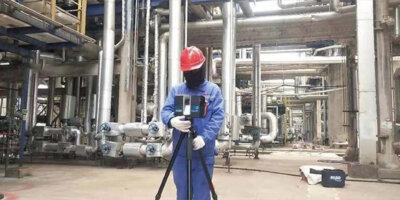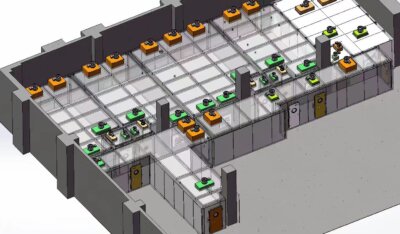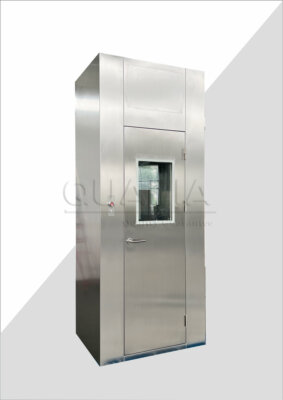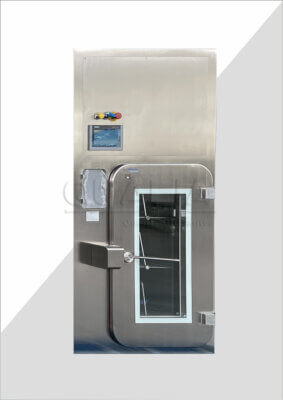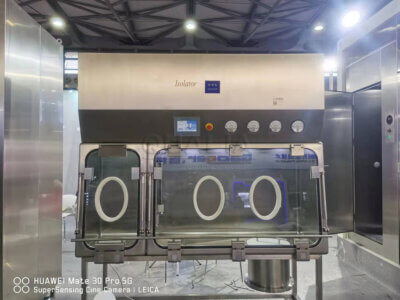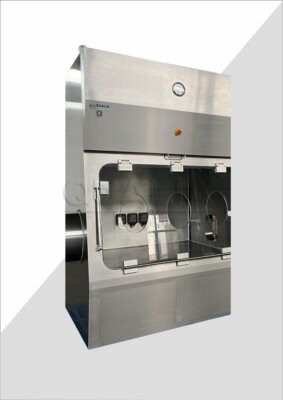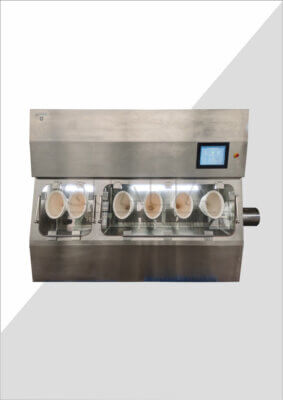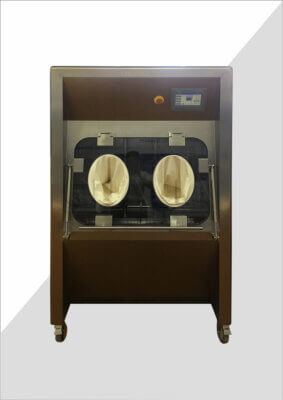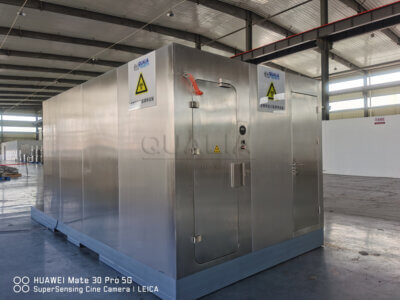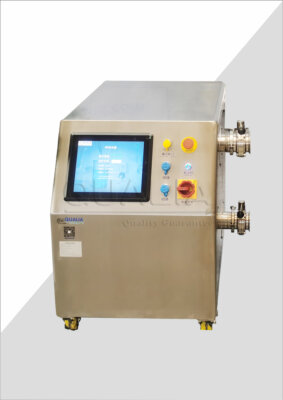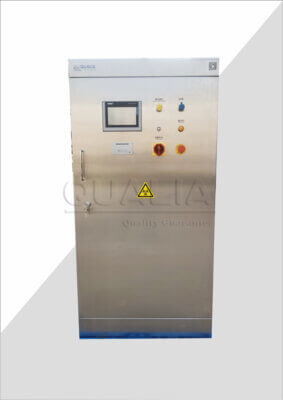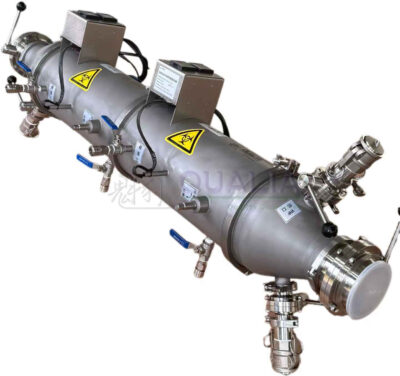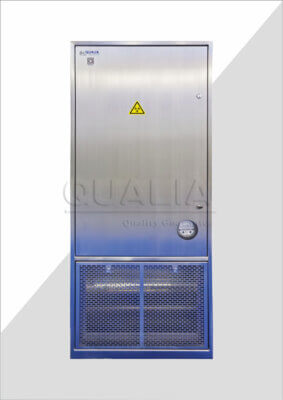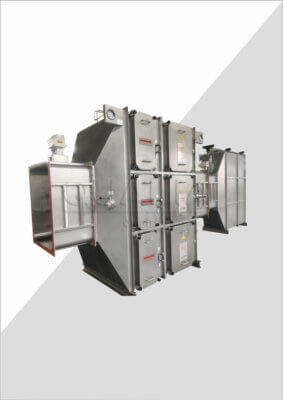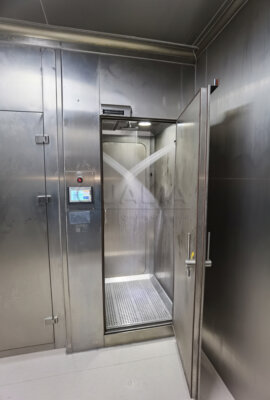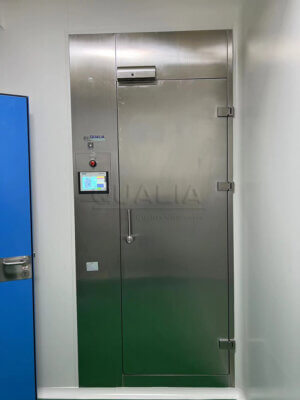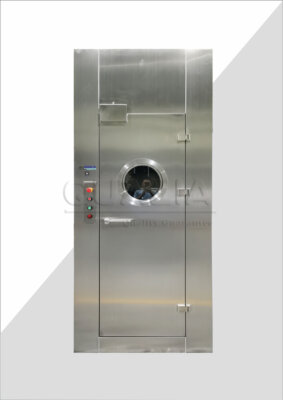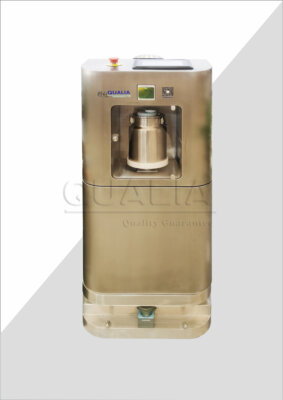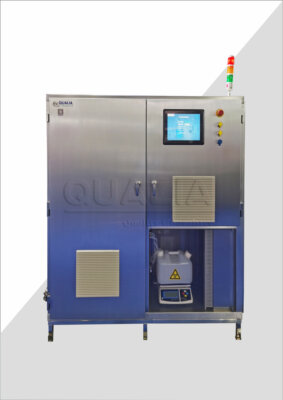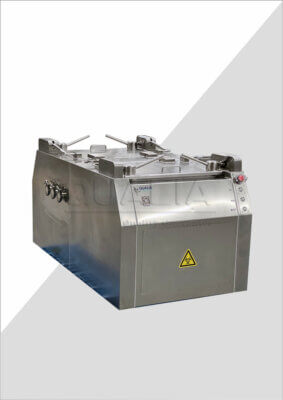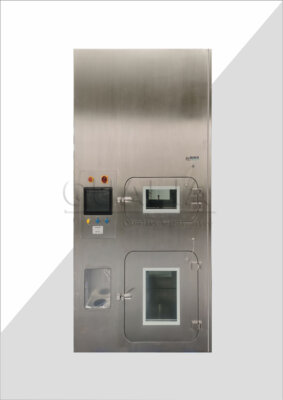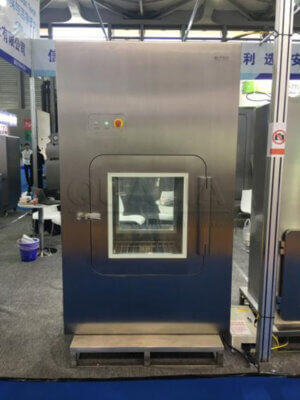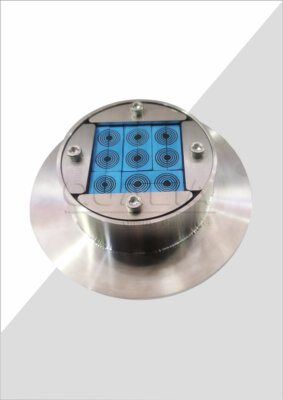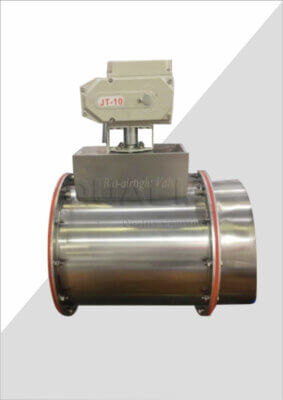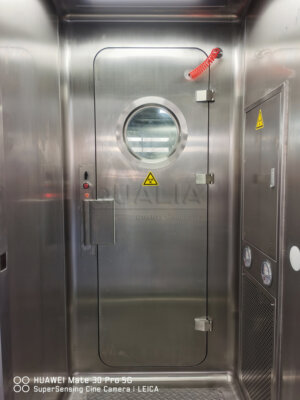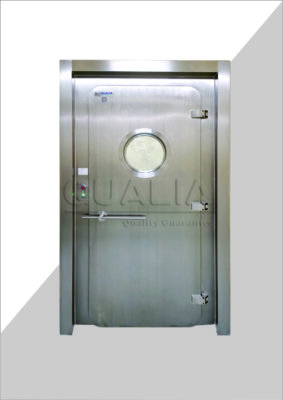In the realm of pharmaceutical manufacturing, maintaining a sterile environment is paramount to ensuring product quality and patient safety. Closed Restricted Access Barrier Systems (RABS) have emerged as a crucial technology in this pursuit, offering a high level of contamination control. This article delves into the environmental monitoring strategies essential for closed RABS, exploring the complexities and best practices that industry professionals must navigate.
Environmental monitoring in closed RABS is a multifaceted process that requires a deep understanding of microbial contamination risks, air quality management, and regulatory compliance. From selecting appropriate sampling locations to implementing robust data analysis protocols, each aspect plays a vital role in maintaining the integrity of the aseptic processing environment. As we explore this topic, we'll uncover the key components of an effective monitoring strategy and how they contribute to the overall success of pharmaceutical manufacturing operations.
As we transition into the heart of our discussion, it's important to recognize that environmental monitoring in closed RABS is not just about meeting regulatory requirements—it's about fostering a culture of quality and continuous improvement. The strategies we'll examine are designed to not only detect potential contaminants but also to provide insights that can lead to process enhancements and risk mitigation.
Closed RABS systems, when coupled with comprehensive environmental monitoring strategies, can significantly reduce the risk of microbial contamination in aseptic processing, potentially leading to a 99.9% reduction in contamination events compared to traditional cleanroom environments.
| Aspect | Open RABS | Closed RABS |
|---|---|---|
| Air Handling | Recirculated air with HEPA filtration | Unidirectional airflow with advanced filtration |
| Decontamination | Manual cleaning and disinfection | Automated bio-decontamination cycles |
| Intervention Risk | Moderate | Low |
| Environmental Monitoring | Frequent | Less frequent, more targeted |
| Operator Gowning | Full cleanroom gowning | Reduced gowning requirements |
| Contamination Control | Good | Excellent |
How does air quality management impact environmental monitoring in closed RABS?
The cornerstone of any closed RABS system is its ability to maintain superior air quality within the critical processing area. Air quality management directly influences the effectiveness of environmental monitoring strategies, setting the foundation for contamination control.
In closed RABS, unidirectional airflow combined with advanced HEPA filtration creates a highly controlled environment. This setup minimizes the risk of airborne contaminants, allowing for more targeted and less frequent environmental monitoring compared to open systems.
The relationship between air quality and monitoring is symbiotic; while good air management reduces contamination risks, effective monitoring ensures that the air handling system performs as intended. 'ISOSERIES Closed Restricted Access Barrier System (cRABS)' by [(QUALIA)[qualia-bio.com]] exemplifies how advanced air handling systems in closed RABS can be integrated with monitoring strategies to maintain the highest levels of cleanliness.
Studies have shown that closed RABS with properly managed air systems can maintain ISO 5 (Class 100) conditions consistently, with particulate levels often 10 times lower than the allowable limit, highlighting the importance of integrating air quality management with environmental monitoring protocols.
| Air Quality Parameter | Typical Open RABS | Closed RABS |
|---|---|---|
| Particulate Count (0.5μm/m³) | < 3,520 | < 352 |
| Air Changes per Hour | 20-60 | 60-100 |
| Recovery Time (min) | 15-20 | 5-10 |
What are the key sampling locations for environmental monitoring in closed RABS?
Identifying critical sampling locations is crucial for an effective environmental monitoring program in closed RABS. These locations should be selected based on a thorough risk assessment and understanding of the manufacturing process.
Typical sampling points include air and surface monitoring near critical areas such as fill zones, stopper bowls, and material transfer ports. Additionally, monitoring the area immediately surrounding the RABS, including operator intervention zones, is essential to ensure the integrity of the barrier system.
The frequency and method of sampling at these locations should be tailored to the specific risks associated with each point. For instance, more frequent monitoring may be required for areas with higher intervention rates or those closest to the product.
A well-designed environmental monitoring program for closed RABS typically includes 15-20 strategic sampling locations, with a focus on critical and high-risk areas. This targeted approach can lead to a 30% reduction in overall sampling frequency while maintaining or improving contamination detection rates.
| Sampling Location | Frequency | Method |
|---|---|---|
| Fill Zone | Every batch | Active air, surface contact plates |
| Intervention Points | Weekly | Passive settle plates, surface swabs |
| Material Transfer Ports | Daily | Active air, surface contact plates |
| Surrounding Area | Monthly | Active air, surface swabs |
How do bio-decontamination procedures affect monitoring strategies in closed RABS?
Bio-decontamination is a critical process in maintaining the sterility of closed RABS environments. The effectiveness of these procedures has a direct impact on the environmental monitoring strategy employed.
Closed RABS systems often utilize automated vaporized hydrogen peroxide (VHP) decontamination cycles. These cycles are highly effective in eliminating microbial contaminants, allowing for less frequent but more targeted environmental monitoring.
The integration of bio-decontamination and monitoring strategies requires careful planning. Monitoring should be conducted both before and after decontamination cycles to verify their effectiveness and to establish baseline cleanliness levels. This approach not only ensures the efficacy of the decontamination process but also helps in optimizing the frequency and locations of routine monitoring.
Implementing automated bio-decontamination cycles in closed RABS can reduce microbial contamination by up to 99.9999%, allowing for a streamlined environmental monitoring approach that focuses on critical control points and reduces overall monitoring frequency by up to 40%.
| Decontamination Aspect | Manual (Open RABS) | Automated (Closed RABS) |
|---|---|---|
| Cycle Time | 4-6 hours | 2-3 hours |
| Efficacy (Log Reduction) | 3-4 log | 6 log |
| Residue Concerns | Moderate | Minimal |
| Impact on Monitoring | Frequent verification needed | Reduced monitoring, focus on critical points |
What role does personnel training play in environmental monitoring of closed RABS?
Personnel training is a crucial component of any environmental monitoring strategy for closed RABS. Well-trained operators are essential for maintaining the integrity of the barrier system and executing monitoring protocols effectively.
Training programs should cover aseptic techniques, proper gowning procedures, and the correct use of monitoring equipment. Operators must understand the principles behind environmental monitoring and the potential impact of their actions on the sterility of the RABS environment.
Regular competency assessments and refresher training ensure that personnel remain up-to-date with best practices and any changes in monitoring procedures. This ongoing education is vital for maintaining the high standards required in aseptic processing environments.
Comprehensive personnel training programs for closed RABS operations have been shown to reduce human error-related contamination events by up to 75%. This significant improvement underscores the importance of investing in thorough and ongoing operator education as part of the overall environmental monitoring strategy.
| Training Aspect | Frequency | Method |
|---|---|---|
| Aseptic Technique | Quarterly | Hands-on simulation |
| Gowning Procedures | Monthly | Practical assessment |
| Monitoring Equipment Use | Bi-annually | Theoretical and practical exam |
| SOP Review | Annually | Written test |
How do data management systems enhance environmental monitoring in closed RABS?
Effective data management is crucial for interpreting and acting upon the information gathered through environmental monitoring in closed RABS. Advanced data management systems play a pivotal role in this process.
These systems allow for real-time data collection, trend analysis, and alert generation when parameters deviate from established limits. By integrating data from various monitoring points, they provide a comprehensive view of the RABS environment over time.
Modern data management platforms also facilitate compliance with regulatory requirements by ensuring data integrity and providing audit trails. They enable rapid response to potential contamination events and support continuous improvement initiatives through detailed analytics.
Implementation of advanced data management systems for environmental monitoring in closed RABS environments has been associated with a 40% improvement in response time to potential contamination events and a 25% reduction in false alarms, leading to more efficient and effective contamination control strategies.
| Data Management Feature | Benefit | Impact on Monitoring |
|---|---|---|
| Real-time Monitoring | Immediate detection of deviations | Allows for proactive intervention |
| Trend Analysis | Identification of long-term patterns | Informs adjustments to monitoring strategy |
| Automated Alerts | Rapid response to excursions | Reduces risk of contamination spread |
| Data Integrity Measures | Ensures compliance with regulations | Enhances reliability of monitoring data |
What are the regulatory considerations for environmental monitoring in closed RABS?
Regulatory compliance is a critical aspect of environmental monitoring strategies for closed RABS. Various global regulatory bodies, including the FDA and EMA, have established guidelines that manufacturers must adhere to.
These regulations typically cover aspects such as monitoring frequency, sampling methods, alert and action levels, and data management practices. They also emphasize the importance of a risk-based approach to environmental monitoring, tailored to the specific product and process characteristics.
Manufacturers must design their monitoring programs to not only meet these regulatory requirements but also to demonstrate continuous improvement and a thorough understanding of their aseptic processes.
A survey of pharmaceutical manufacturers using closed RABS found that those with robust regulatory compliance programs for environmental monitoring were 60% less likely to experience major findings during regulatory inspections, highlighting the importance of aligning monitoring strategies with current good manufacturing practices (cGMP).
| Regulatory Aspect | Requirement | Impact on Monitoring Strategy |
|---|---|---|
| Sampling Frequency | Risk-based approach | Tailored monitoring schedules |
| Data Integrity | Electronic records compliance | Implementation of validated data management systems |
| Trending Analysis | Regular review of environmental data | Incorporation of statistical tools in monitoring programs |
| Corrective Actions | Documented response to excursions | Integration of CAPA systems with monitoring protocols |
How can risk assessment tools improve environmental monitoring strategies for closed RABS?
Risk assessment is an integral part of developing and refining environmental monitoring strategies for closed RABS. By systematically identifying and evaluating potential contamination risks, manufacturers can create more targeted and effective monitoring programs.
Tools such as Failure Mode and Effects Analysis (FMEA) and Hazard Analysis and Critical Control Points (HACCP) can be applied to aseptic processing environments. These methodologies help in prioritizing monitoring efforts on the most critical areas and processes.
Regular risk assessments also support continuous improvement by identifying emerging risks and evaluating the effectiveness of existing control measures. This dynamic approach ensures that the environmental monitoring strategy remains relevant and robust over time.
Pharmaceutical companies that implement comprehensive risk assessment tools in their environmental monitoring strategies for closed RABS report a 35% increase in the early detection of potential contamination issues and a 50% reduction in the cost associated with unnecessary monitoring of low-risk areas.
| Risk Assessment Tool | Application | Benefit to Monitoring Strategy |
|---|---|---|
| FMEA | Process step analysis | Identifies critical monitoring points |
| HACCP | Control point determination | Focuses resources on high-risk areas |
| Risk-based sampling plans | Sampling frequency optimization | Balances monitoring effort with risk level |
| Contamination pathway analysis | Intervention risk assessment | Informs personnel training and procedures |
In conclusion, environmental monitoring strategies for closed RABS are complex, multifaceted systems that require careful planning, implementation, and continuous improvement. By focusing on air quality management, strategic sampling, effective bio-decontamination, personnel training, advanced data management, regulatory compliance, and risk assessment, manufacturers can create robust monitoring programs that ensure the highest levels of product quality and patient safety.
The integration of these various elements into a cohesive strategy is essential for maximizing the benefits of closed RABS technology. As the pharmaceutical industry continues to evolve, so too must our approaches to environmental monitoring. By staying abreast of technological advancements, regulatory changes, and best practices, manufacturers can maintain the integrity of their aseptic processes and contribute to the production of safe, high-quality pharmaceutical products.
Ultimately, the success of environmental monitoring in closed RABS depends on a holistic approach that combines scientific rigor with practical implementation. By embracing this comprehensive strategy, manufacturers can not only meet regulatory requirements but also foster a culture of quality that drives continuous improvement and innovation in aseptic processing.
External Resources
Environmental Monitoring Program: Hot topics & Best Practices – A3P – This article discusses the key expectations for environmental monitoring (EM) in aseptic processing, including the use of isolator or closed RABS technologies. It outlines the requirements for EM locations, sampling methods, and the importance of risk analysis in determining sampling locations.
Legacy Filling Lines Evolve Safeguarding with RABS Technology – PDA – This resource details the evolution of legacy filling lines to incorporate Restricted Access Barrier Systems (RABS), including closed RABS. It emphasizes the need for updated SOPs, batch records, and environmental monitoring procedures to ensure compliance with regulatory standards.
Advanced Aseptic Processing: RABS and Isolator Operations – European Pharmaceutical Review – This article provides an overview of RABS and isolator operations, including environmental monitoring strategies for closed RABS. It discusses the manual bio-decontamination methods, personnel gowning requirements, and the procedural shifts needed for successful operation.
Closed Restricted Access Barrier System – Esco Pharma – This page explains the design and operation of closed RABS, including their air handling systems, material transfer devices, and gaseous decontamination systems. It highlights the advantages and applications of closed RABS, particularly in handling slightly toxic products.
Difference Between Open RABS and Closed RABS – IsoVax – This article compares open and closed RABS, focusing on the air handling systems, pressure management, and the need for careful cleaning and maintenance of closed RABS. It discusses the implications for environmental monitoring and contamination control.
Related Contents:
- Unveiling the Best RABS for Your Facility
- Regulatory Compliance and Closed RABS in Pharmaceutical Production
- Implementing Closed RABS: Ensuring Aseptic Processing Excellence
- Maintaining Sterility: The Role of Closed RABS in cGMP Compliance
- Closed RABS: Revolutionizing Aseptic Processing in Pharmaceuticals
- Maintaining Sterility: The Critical Role of Closed RABS in Pharmaceutical Production
- Closed RABS in Biotech: Advancing Aseptic Processing
- Revolutionizing Pharmaceutical Manufacturing with Closed RABS
- Weighing the Costs and Benefits of Closed RABS Implementation


